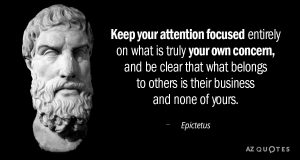
Reprint from Mark Ferrell for the Holiday Weekend
Why do dogs live less than people?
Here’s the answer:
Being a Vet, I was called to examine a 13-year-old Irish dog named Belker.
The dog’s family, Ron, his wife Lisa, and their little 6-year-old, Shane were close to Belker and expected a miracle.
I tested the dog and found out he was dying of cancer. I told the family I couldn’t do anything for him and offered to do the euthanasia procedure at home.
The next day I felt the familiar feeling in my throat when Belker was surrounded by family.
Shane seemed so quiet, petting the dog for the last time and I was wondering if he would understand what was going on. In a few minutes, the animal fell peacefully sleeping to never wake up.
The child seemed to accept Belker’s transition without difficulty. We sat for a moment wondering why the unfortunate fact that dog life is shorter than human beings.
Shane, who had been listening closely, said: “I know why.”
What he said next surprised me. Actually, I had never heard a more heartwarming explanation than this. This moment changed my way of seeing life.
He said: “People come into the world t learn to live a good life, like loving others all the time and being a good person, right? Well, as dogs are born knowing how to do all this, they don’t have to stay as long as we do.”
The moral of the story is:
If a dog was his teacher, you’d learn things like:
-When your loved ones come home, always run to say “Hello!”
-Never pass up an opportunity to go for a walk.
-Allow yourself the experience of fresh air and wind.
-Runs, jumps, and playing daily.
-Upgrade your attention and let people touch you.
-Avoid ‘biting’ when just a ‘growl’ will do
-On warm days lay in the grass.
-When you’re happy, dance around and wag your entire body.
-And, always remember: “When someone has a bad day, stay silent, sit close and gently make them feel like you’re there.”
This is the secret of happiness that, even if we don’t’ realize, dogs teach us daily!
Happy Holiday Weekend!








 Word Of Mouth Meets Customers Head-On
Word Of Mouth Meets Customers Head-On


